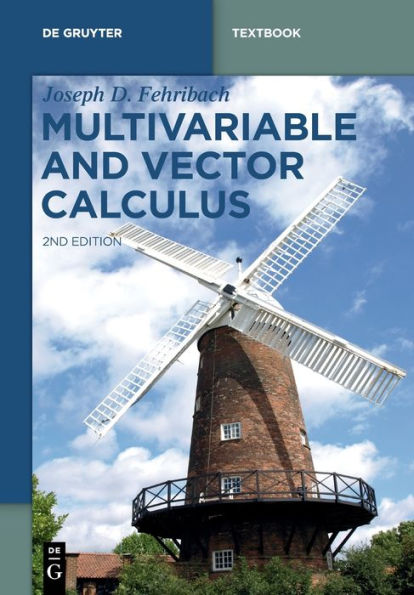Table of Contents
Foreword vii
Notes to the reader ix
1 Introduction/Background 1
1.1 What is multivariable and vector calculus? 1
1.2 Vectors, lines, and planes in R3 2
1.2.1 Vectors 2
1.2.2 Planes in R3 7
1.2.3 Lines in R3 9
1.2.4 Projections 11
1.3 Basic surfaces in R3 13
1.3.1 Quadratic surfaces 13
1.4 Polar, cylindrical, and spherical coordinates 15
1.4.1 Polar coordinates in R2 15
1.4.2 Cylindrical and spherical coordinates in R3 18
2 Vector functions 25
2.1 Limits, derivatives, and integrals for vector functions 25
2.2 Parametric Curves in R2 and R3 28
2.3 Particle motion in R2 and R3 32
2.3.1 Tangent vectors 33
2.3.2 Normal vectors 35
2.3.3 Acceleration 36
2.4 Arc length 37
2.4.1 Arc length between fixed points α and ω 37
2.4.2 Arc length as a function of time: s(t) 40
2.5 Acceleration decomposition 41
3 Multivariable derivatives-differentiation in Rn 47
3.1 Limits in Rn 47
3.1.1 Definitions and the basics 47
3.1.2 0/0 indeterminate form 51
3.1.3 Something that does not work 56
3.2 Continuity in Rn 57
3.2.1 Definition and examples 57
3.2.2 Types of discontinuities 60
3.2.3 Piecewise continuity 61
3.3 The derivative in Rn 61
3.3.1 Partial derivatives 62
3.3.2 Higher-order partial derivatives 63
3.3.3 Tangent planes and unique tangent planes 64
3.3.4 Existence of the tangent plane 67
3.3.5 Multivariate derivative 69
3.4 The chain rule in Rn 70
3.4.1 The basic chain rule 71
3.4.2 Several interesting extensions 73
3.4.3 Implicit partial differentiation 75
3.5 Directional derivatives 76
4 Implications of multivariable derivatives 83
4.1 Level curves, level surfaces 83
4.2 The gradient F for the surface F(x, y, z) = 0 84
4.3 Maximums and minimums for continuous functions on closed and bounded domains 86
4.4 Local extrema 89
4.5 Lagrange multipliers 93
5 Multiple integrals-integration in Rn 99
5.1 Riemann integration versus iterated integrals 99
5.1.1 Single-variable Riemann integration 99
5.1.2 Multivariable Riemann integration 101
5.1.3 Iterated integrals 102
5.1.4 The Fubini theorem and the relationship between Riemann and iterated integrals 103
5.1.5 When it all goes wrong: functions that are not Riemann integrable 105
5.2 Double integrals: integration over domains in R2 106
5.2.1 Integration using rectangular coordinates 106
5.2.2 Polar integration 110
5.2.3 What does dA or dy dx become? 111
5.2.4 What does it all mean? What do double integrals represent? 113
5.3 Triple integrals: integration over domains in R3 115
5.3.1 Integration using rectangular coordinates 115
5.3.2 Integration using cylindrical and spherical coordinates 120
6 Vector fields and vector calculus 133
6.1 Line integrals: integration along curves in R2 or R3 133
6.1.1 Direct evaluation of line integrals 135
6.1.2 Path dependence; path independence 136
6.1.3 How crossing a curve 140
6.2 Surface integrals: integration over surfaces in R3 141
6.3 Differential operators 143
6.3.1 Definitions 143
6.3.2 Why is dlv(u) actually divergence? 144
6.4 The theorems of Gauss, Green, and Stokes 147
6.4.1 The divergence theorem 147
6.4.2 Green's identities 151
6.4.3 Stokes' theorem 151
6.5 All together now: a unified theorem 155
Bibliography 161
Index 163



